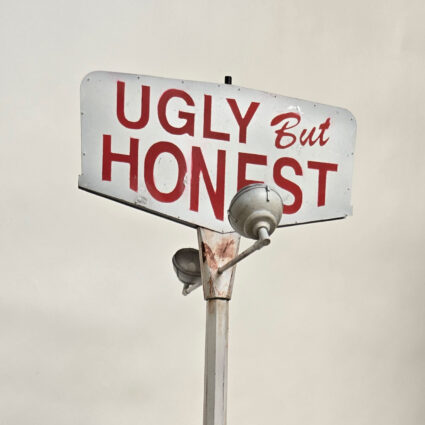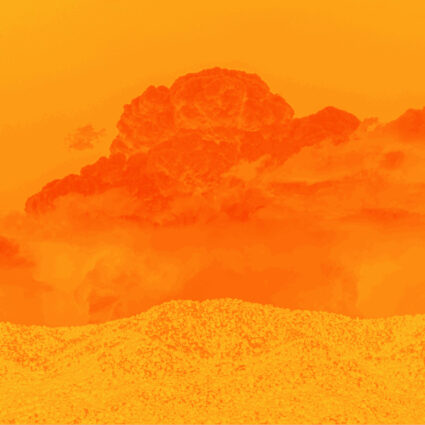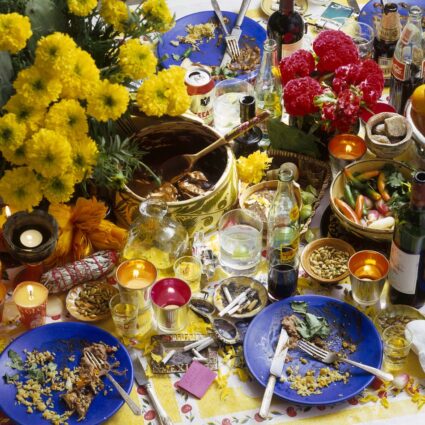In his first museum exhibition, Burying Painting, James Perkins shows evanescent process- and land-based artworks “harvested” from the Atlantic Ocean and the Sonoran Desert.
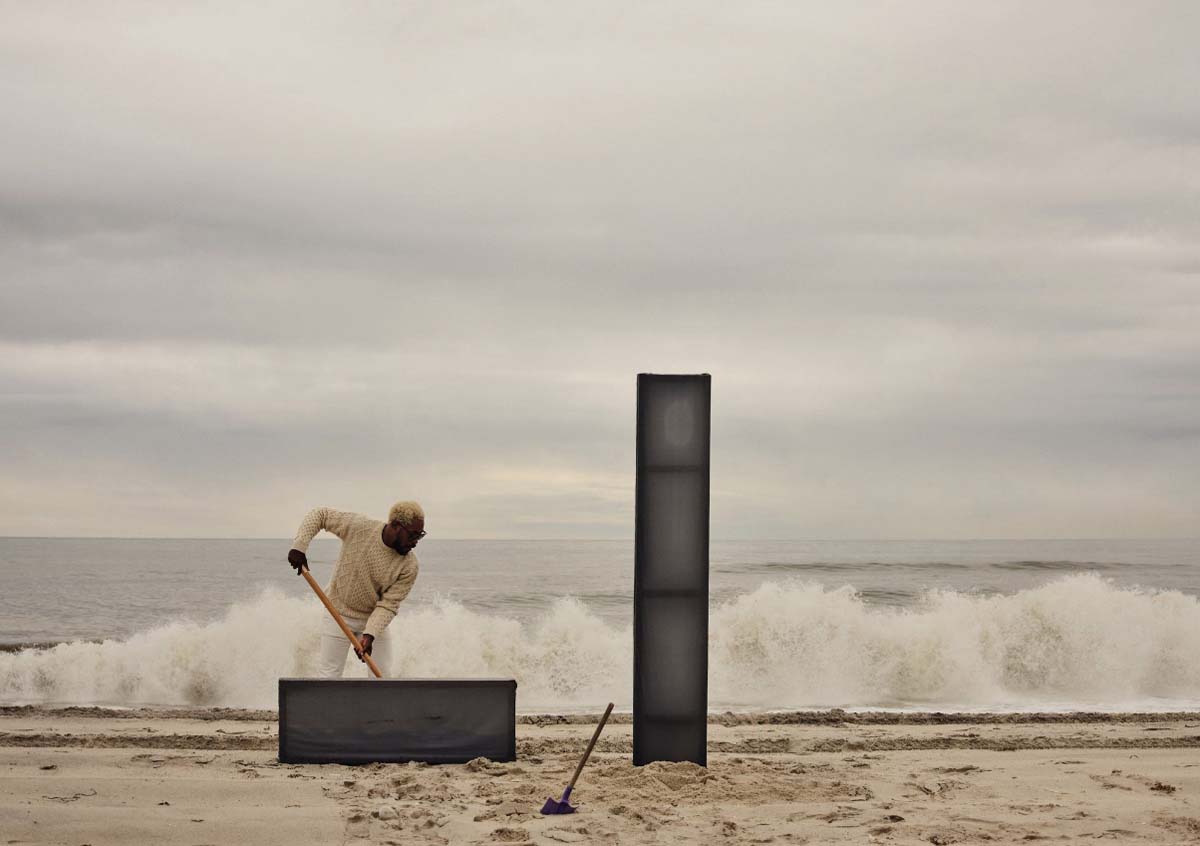
James Perkins | Burying Painting
September 20, 2025–February 15, 2026
Scottsdale Museum of Contemporary Art
Since New York–based artist James Perkins initiated his singular practice, the catalysts for his process- and land-based artworks have been primarily the sun, rain, beach, sea, wind, and waves off the Atlantic Ocean. Perkins and his family have a home on Fire Island. There Perkins constructs minimalist wood structures, wraps and staples them with last-season’s silk from the Fashion District, and buries them in the sand. After months or years, he “harvests” them, removing the silk and re-stretching and stapling it to a new wood form for exhibition.
In his first museum show, Burying Painting at Scottsdale Museum of Contemporary Art, several of these evanescent works illuminate one long wall: silks formerly dyed a deep forest green, a rosy blush, and hot pink transformed via natural forces into shimmers of subtler, earthier tones narrowing to a gorgeous column of light—the fabric strip on top, most exposed to the sun. In his remounting of the harvested fabric on large flat triangular wood forms, Perkins emphasizes the monumental yet unobtrusive aspects of his collaborative, nature-based work, and their grounding in a sense of spiritual balance and harmony.
The fascinating Event Horizon No. 3 (A Meeting With the Sky), Fire Island Installation at Sunset (2017), with its loose terracotta base fading upward into a shaft of ochre with the faintest of resplendent suns on either side; the dazzling Tamarisk (Vertical No. 1) (2018), rising in glow from wave-crested magenta through violets and blush to a heavenly hue; and I Can See the End (2022) with its fabric weather-worn into clay-toned color blocks: these Fire Island works all attest to the ways in which Perkins’s earth-focused process results in art that manifests a topography all its own.
But the works he created in the Sonoran Desert during a residency at Cattle Track Arts Compound elevate this practice into astonishing new realms of playfulness, awe, and biophilic intimacy.
After positioning and half-burying five silk-wrapped forms around a creosote bush (a video of Perkins digging the trenches fills the gallery with the sounds of his labor), Perkins set up a video camera. Rabbits, birds, mice, and Gambel’s quail visit the installation, as do a pair of coyotes. At night their eyes glow like golden orbs in the darkness. Finding a playground, they bite, chew, and tug on the silk; they dig underneath, dive over, and race through the structures; they mouth and nip at each other; wrestle with hanks of silk in their mouths; they even bring in a mangled stuffed toy from elsewhere to bury.
What viewers watch with fascination in the video, titled The Straw That Didn’t Break The Camelback (Sonoran Desert) (2025), is also captured in Perkins’s remounted remnants. Mostly notably in Creosote (2025), the silk’s black edges, ridged with wave-like impressions, dissolve into a silvery green on which coyote paw prints, nose bumps, and bite marks are clearly visible. For Cattle Track (2025), Perkins left the lower edge of the buttery, coppery silk raw and ragged. He also left the silk intact on the forms for Savage Love (2025) and Animalistic Love (2025), the material darkened, bunched, torn, and bit as it was in situ.
Numerous articles and the museum’s press materials on Perkins situate the artist within the heavy-machinery, earth-moving practices of Southwest Land Artists, the sensibility of Minimalism, and performativity of the Abstract Expressionists and beyond. Perkins, moreover, has developed a nomenclature for his work. He describes his “post-totem structures” as made in natural settings or “sites,” but “harvested,” stretched, remounted, and displayed in “nonsites.” The exhibition illuminates his working methods by including photos and video of him at work, and by including in the center of the gallery his preferred triangular forms in pine, travertine, and wood partially draped in silk.
Witnessing the work, however, and the stages of transmutation that occur because of the natural forces allowed to play upon its surfaces and structures, speaks to something more profound. Memories live within the sheen of the silk, of what transpires after Perkins puts his work to sleep and waits for others for dream with it. In the aftermath, we simply exist in its shimmer of remembrance, in the presence of the sublime.
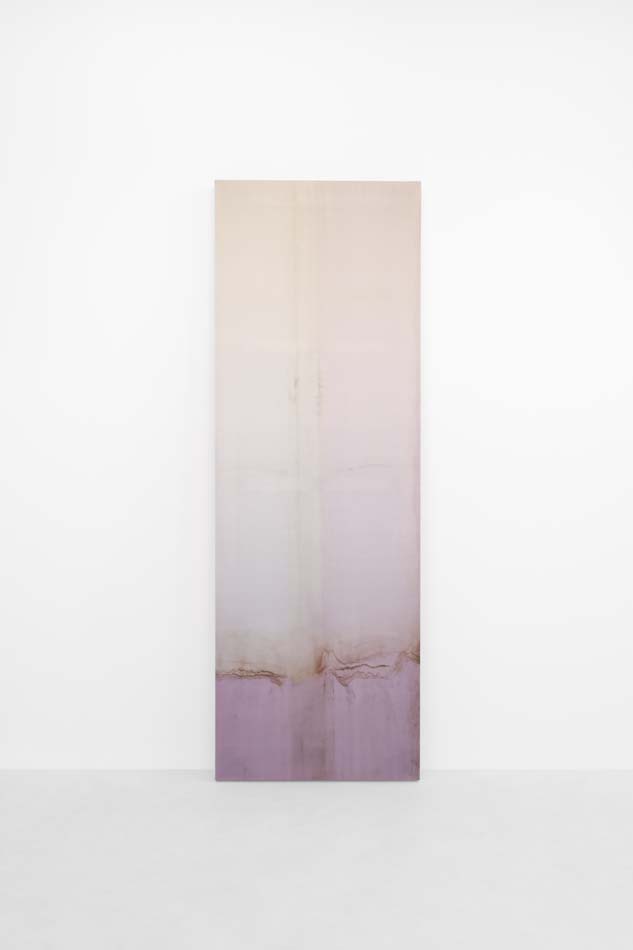
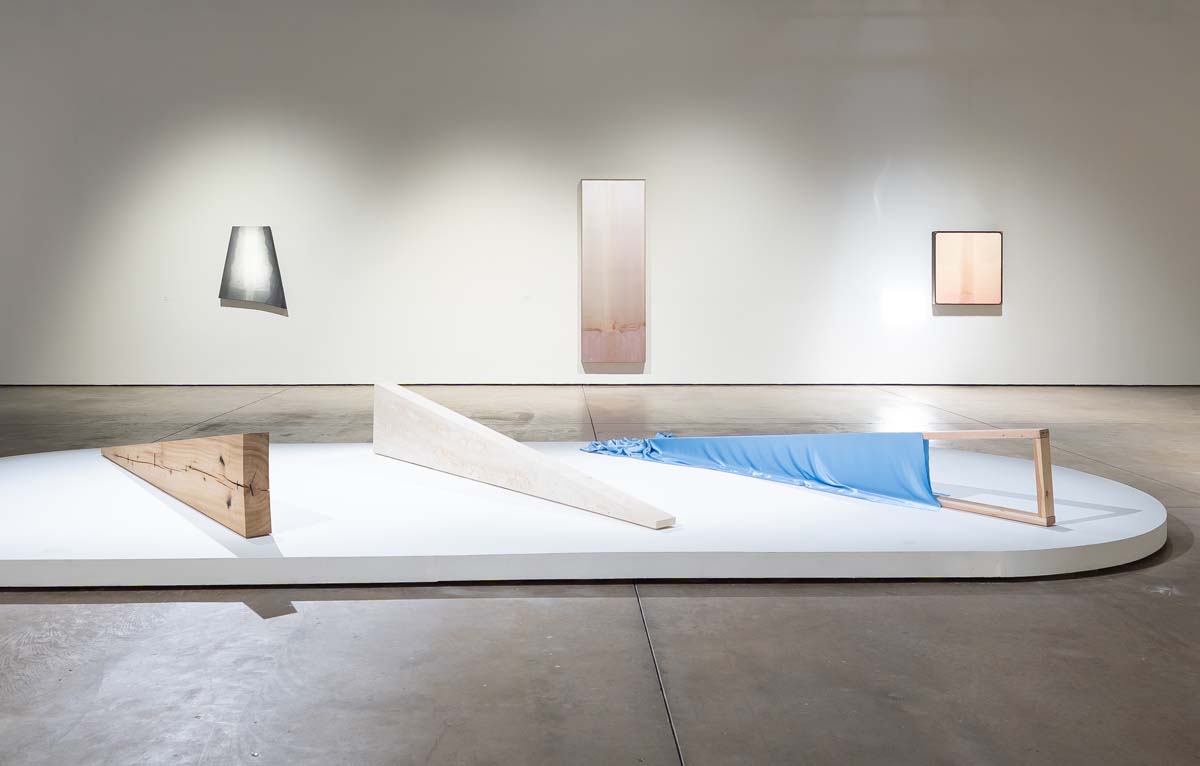
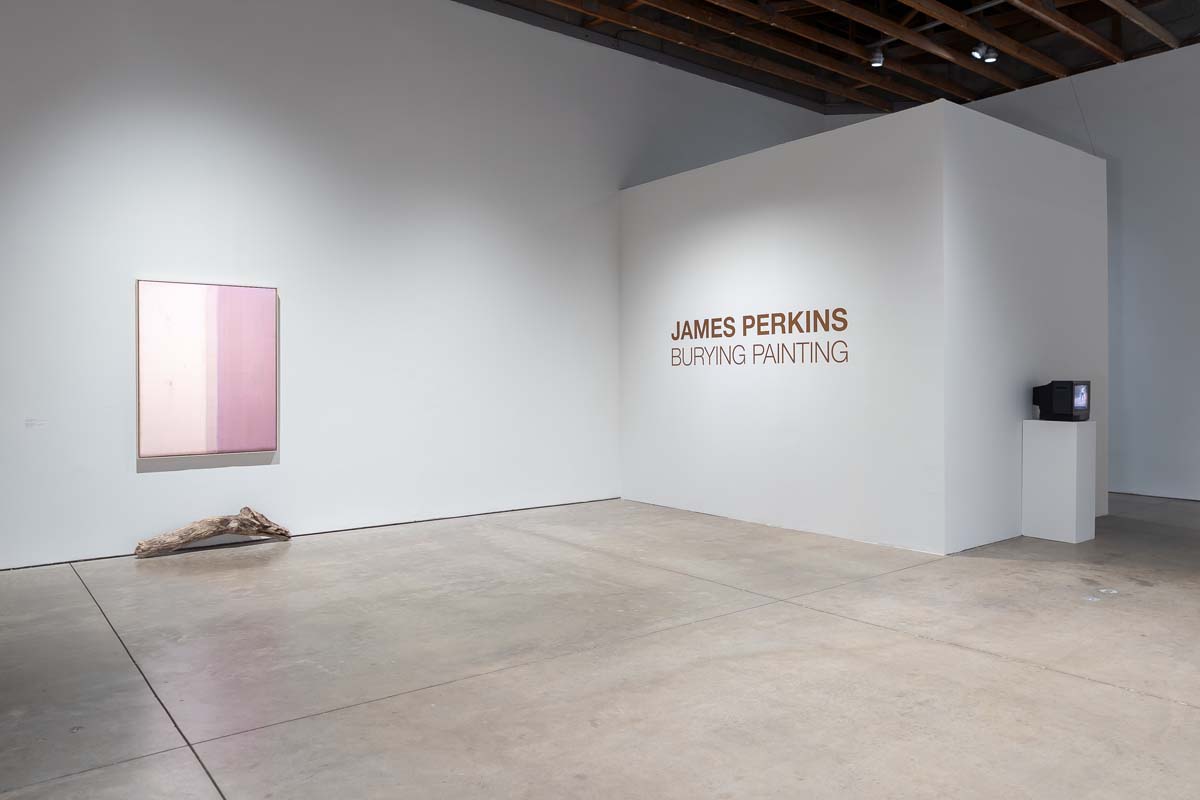
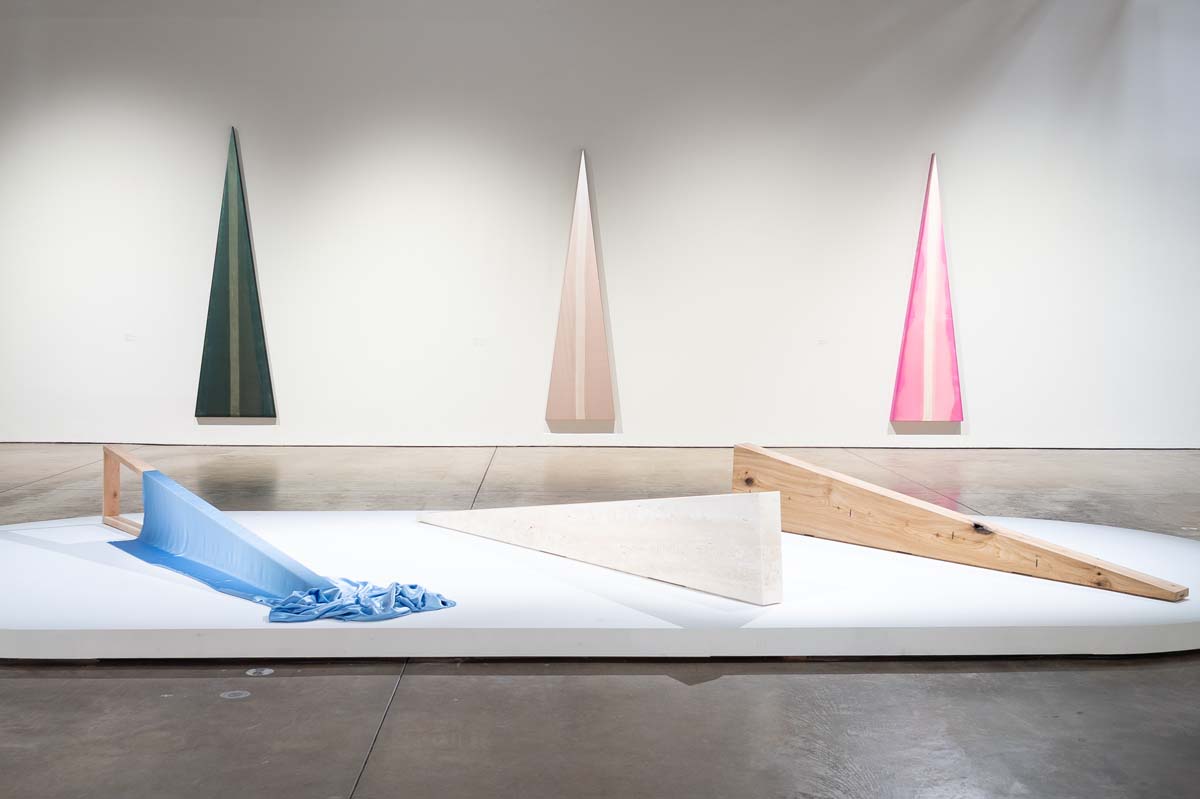
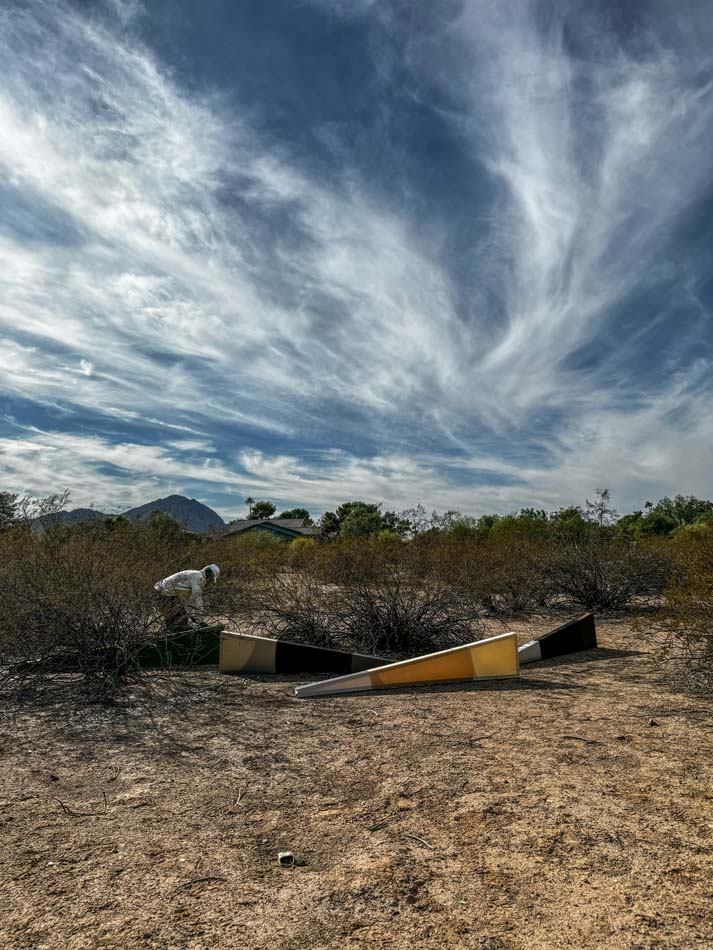
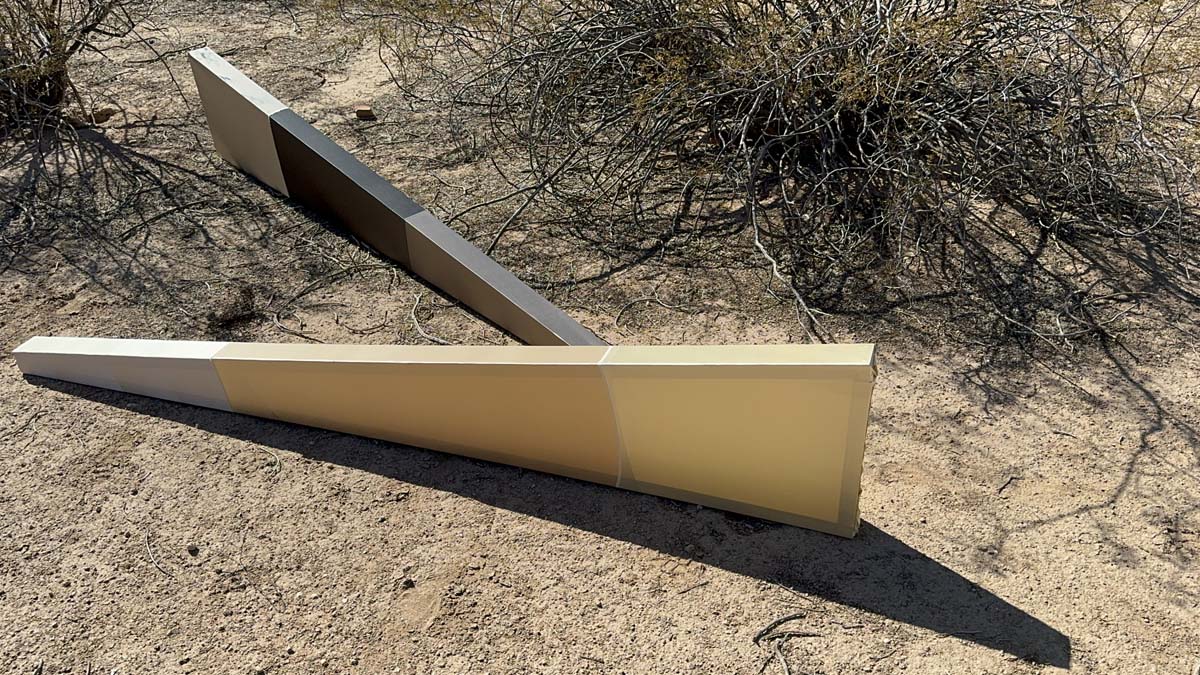
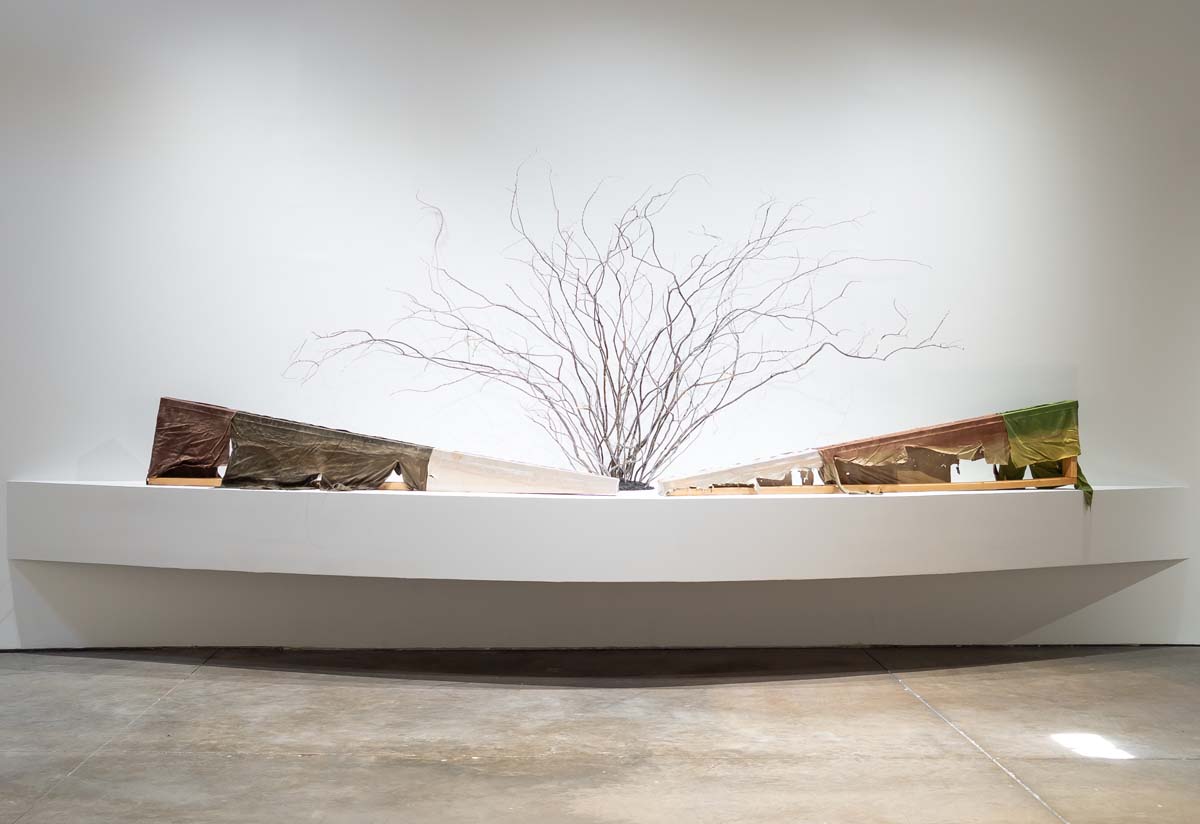
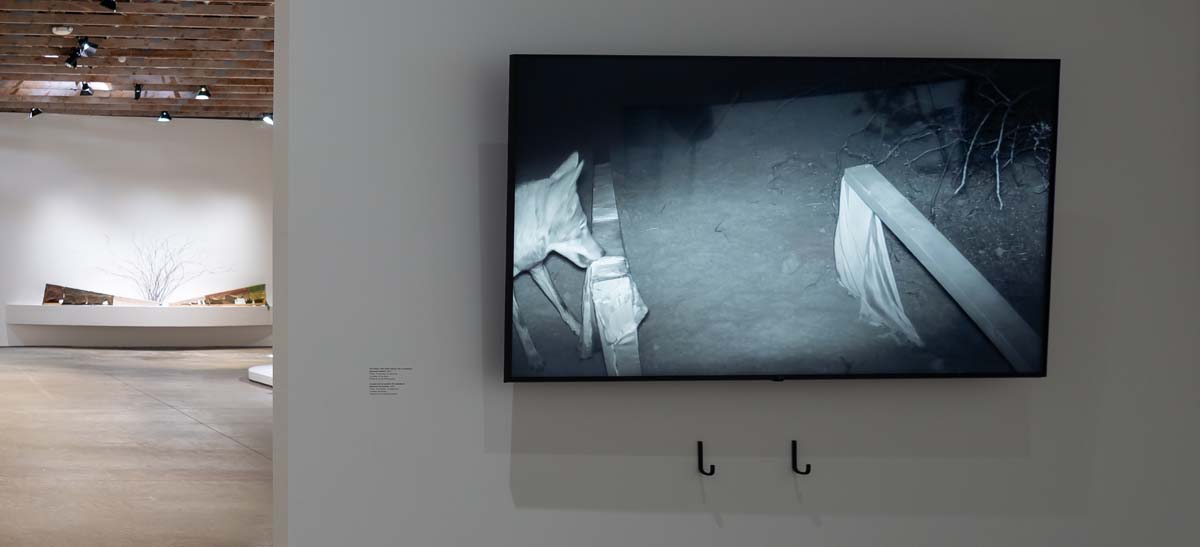
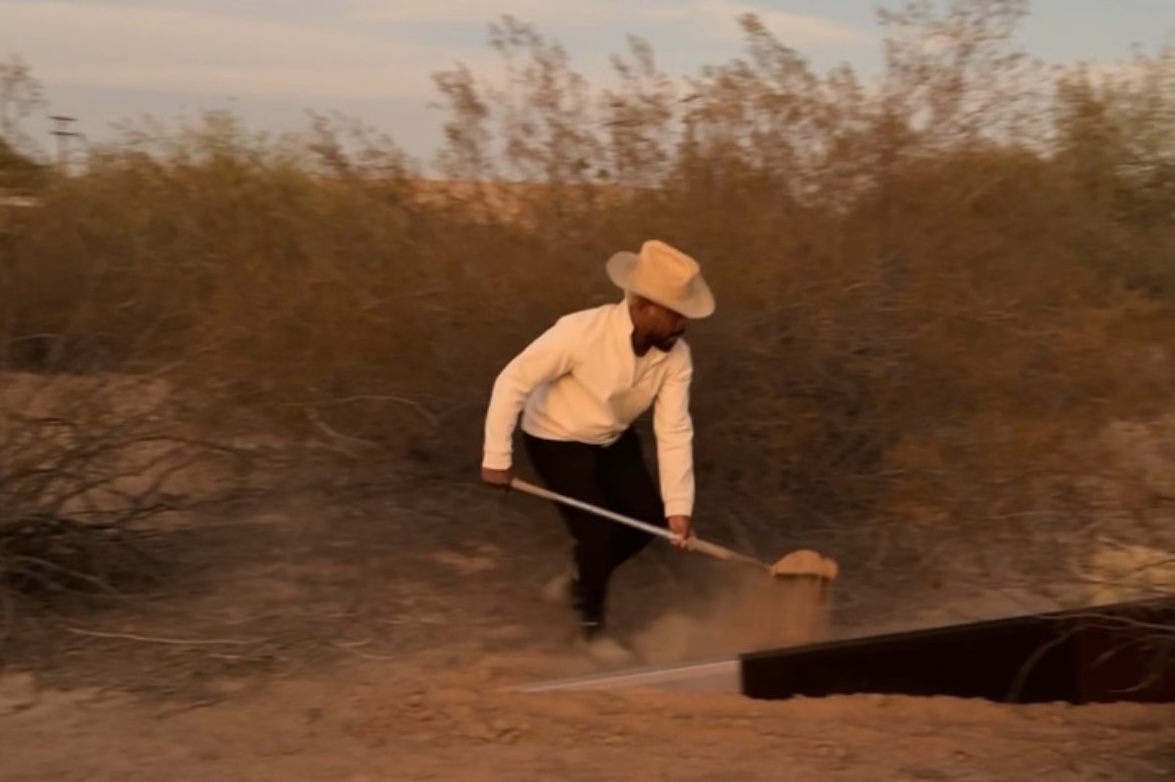
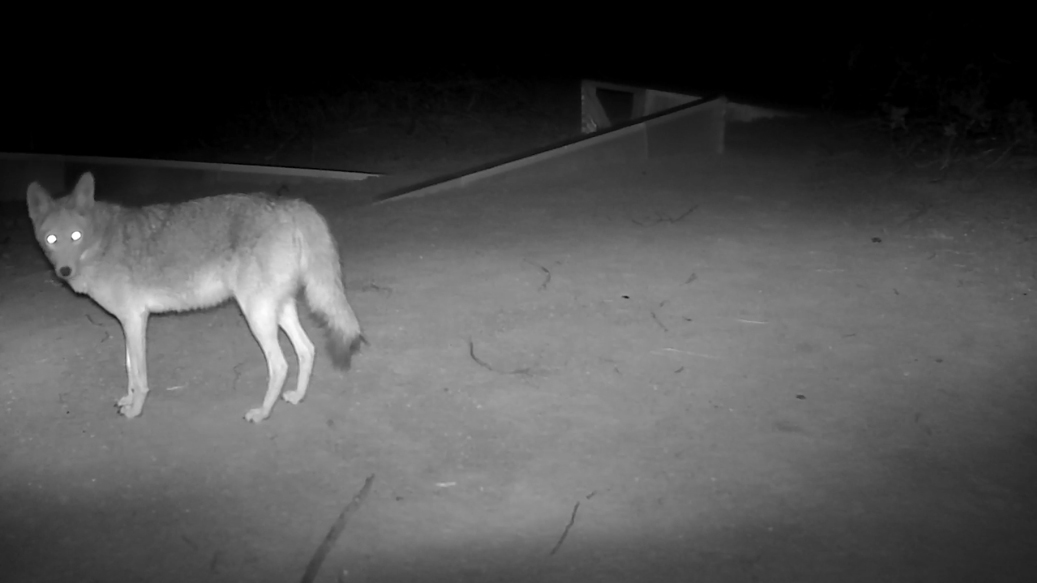
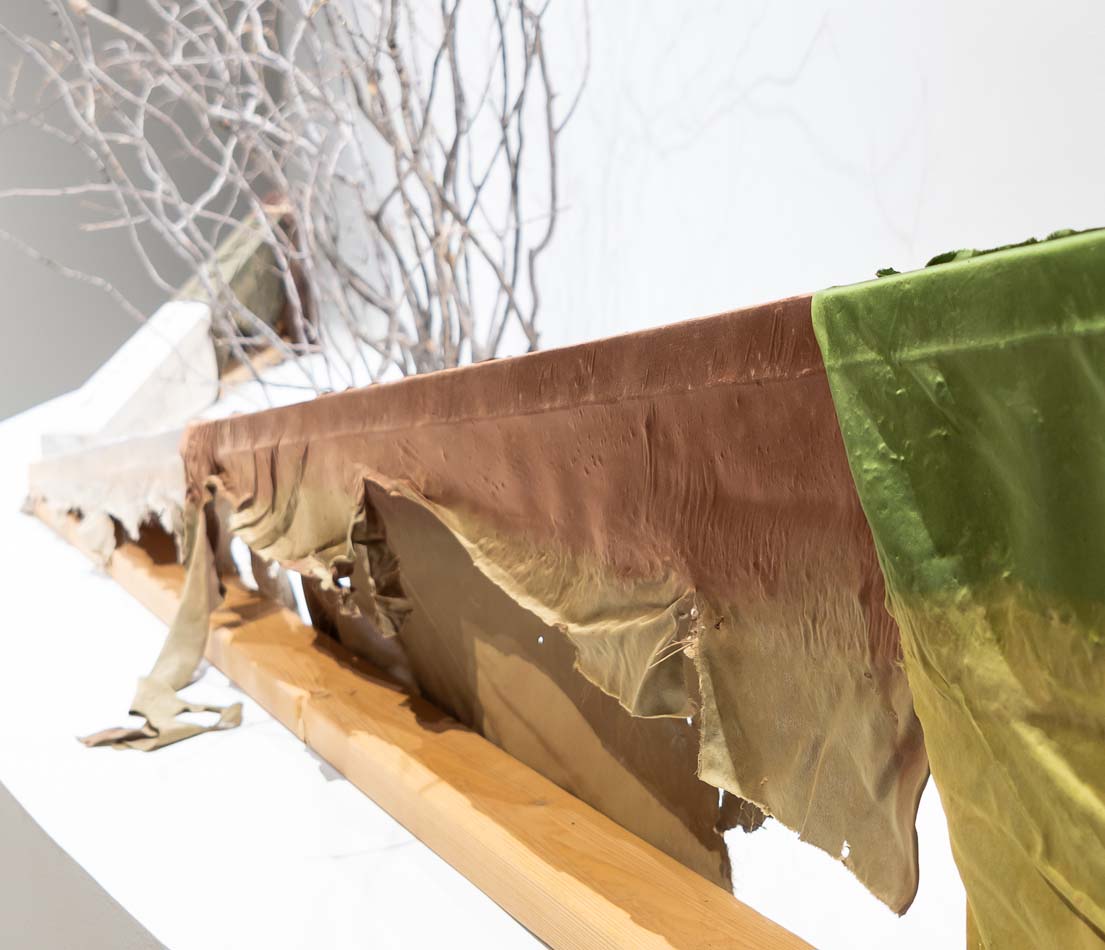
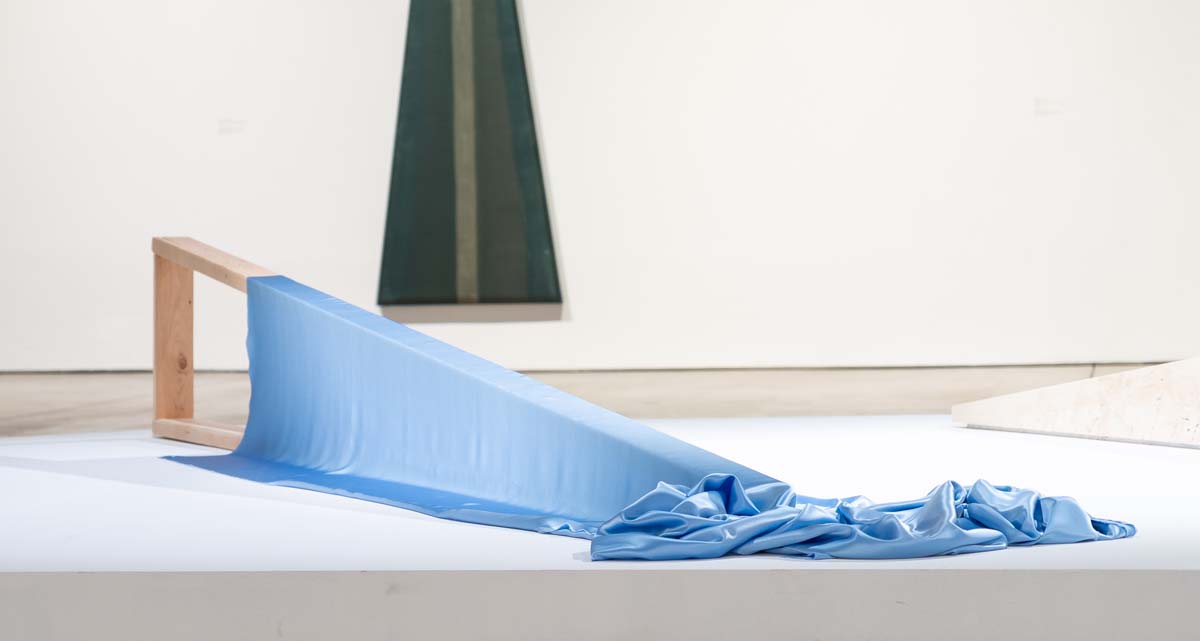
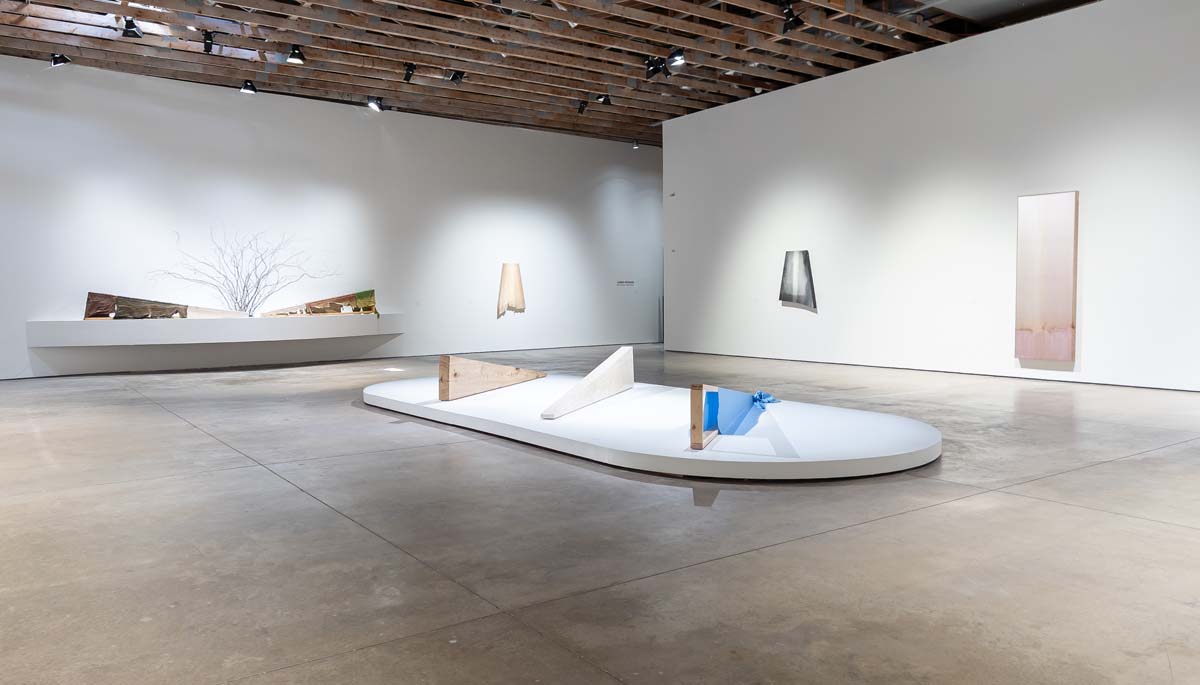
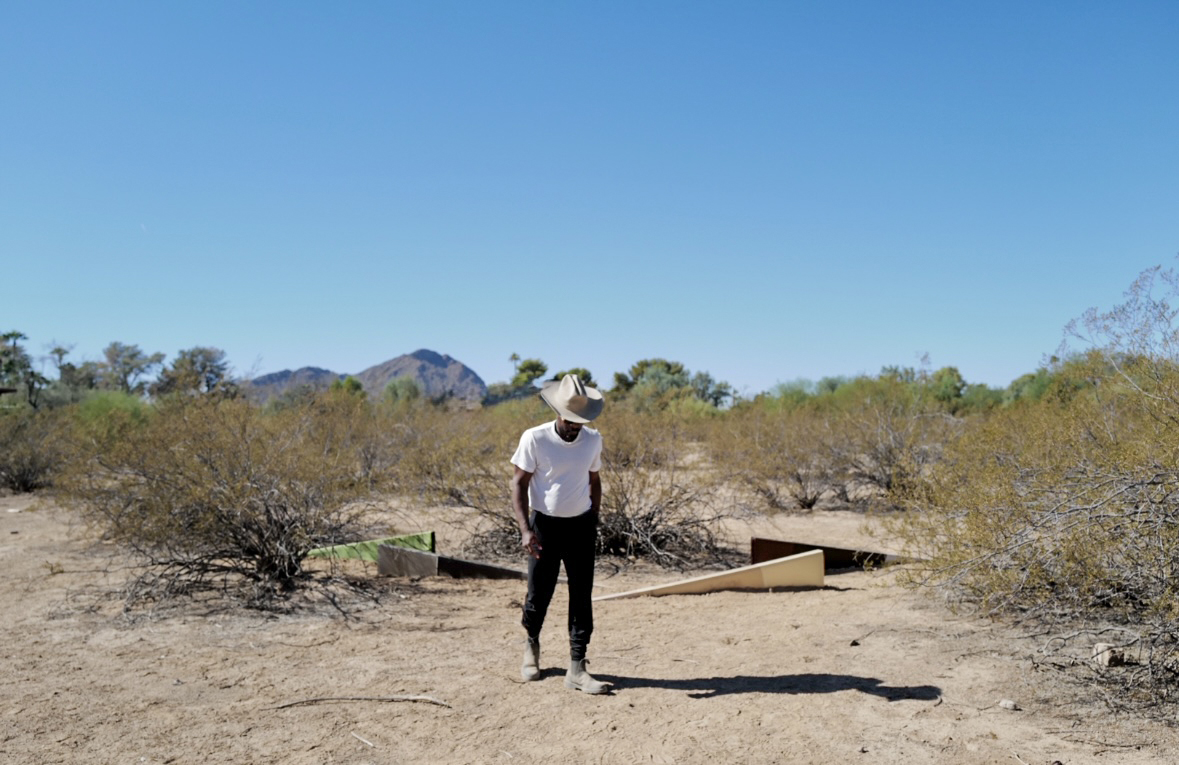
Correction 10/09/2025: James Perkins buried five silk-wrapped forms at the Cattle Track Arts Compound, rather than four, as the review previously noted, according the curator.
